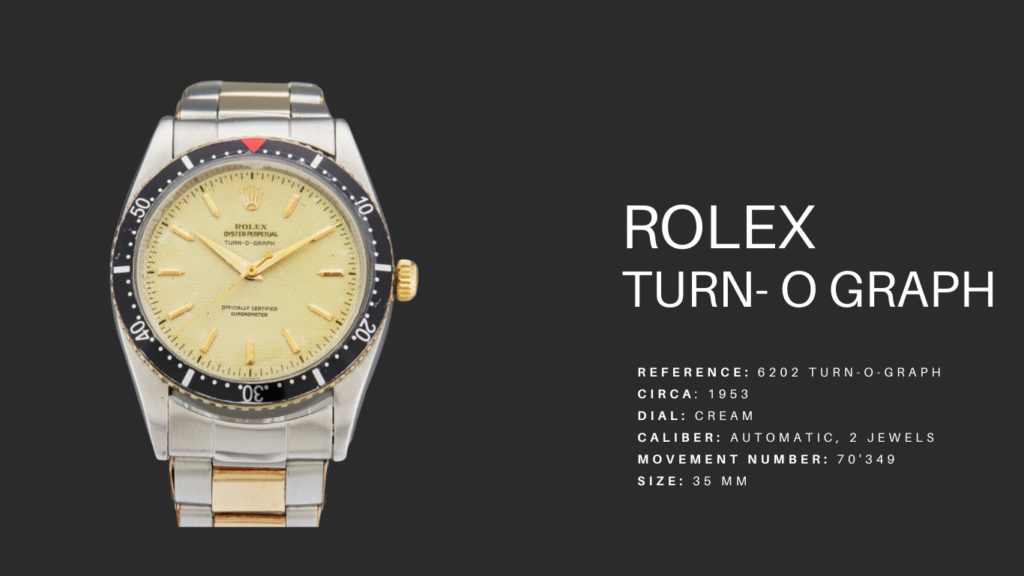ROLEX TURN-O-GRAPH History
ROLEX introduced for the first time in the public Rolex Turn-O-Graph in 1953 under the Reference 6202, the characteristic of Turn-O-Graph that made the watch stand out was the rotating bezel that measured elapsed time and the pencil shaped hands.
The Rolex Turn-O-Graph ability to accurately record elapsed time made it quite popular among watch lovers and therefore was chosen by the Thunderbirds—the United States’ elite aerobatic squadron in order to help their pilots to calculate the time. For many Turn-O-Graph is considered the opening watch to the main category for Rolex of sports watches followed by GMT and Submariner.

ROLEX TURN O GRAPH Movement
It used a A296 movement later replaced by A260 and had a depth rated at 50 meters. As it covered the same needs as GMT of world traveler in the next few years was totally replaced by Rolex GMT therefore its production years were limited to a decade until the early 1960s. In this decade of production the watches were accompanied by two movements A296 from the beginning till the mid of 1950 and A260 from that point till the end of production.
ROLEX TURN O GRAPH Reference 6202
In 1953 Rolex introduced Turn-O-Graph under the reference 6202. This marked a revolutionary step for Rolex, as the Turn-O-Graph was not only a timekeeping instrument but also featured a rotating bezel, setting it apart from traditional chronographs.
The reference 6202 Turn-O-Graph showcased Rolex’s commitment to innovation, combining the precision of a chronograph with the functionality of a rotating bezel. This feature, initially designed for timing intervals, laid the groundwork for future Rolex sports watches, particularly the iconic Submariner.
ROLEX TURN-O-GRAPH Design
The Rolex Turn-O-Graph’s distinctive design and functionality quickly gained popularity, earning it the nickname “Thunderbird” when it became the official watch of the U.S. Air Force Thunderbirds aerobatic team in the 1950s. This association added a touch of glamour and adventure to the timepiece, solidifying its place in both aviation and horological history.
As Rolex continued to refine its chronograph offerings, the Turn-O-Graph set the stage for the brand’s enduring legacy of creating timepieces that seamlessly blend form and function. The success of the Turn-O-Graph paved the way for subsequent Rolex sports watches, becoming a cornerstone of the brand’s identity.
Want to learn more about Rolex History?




Comments are closed.